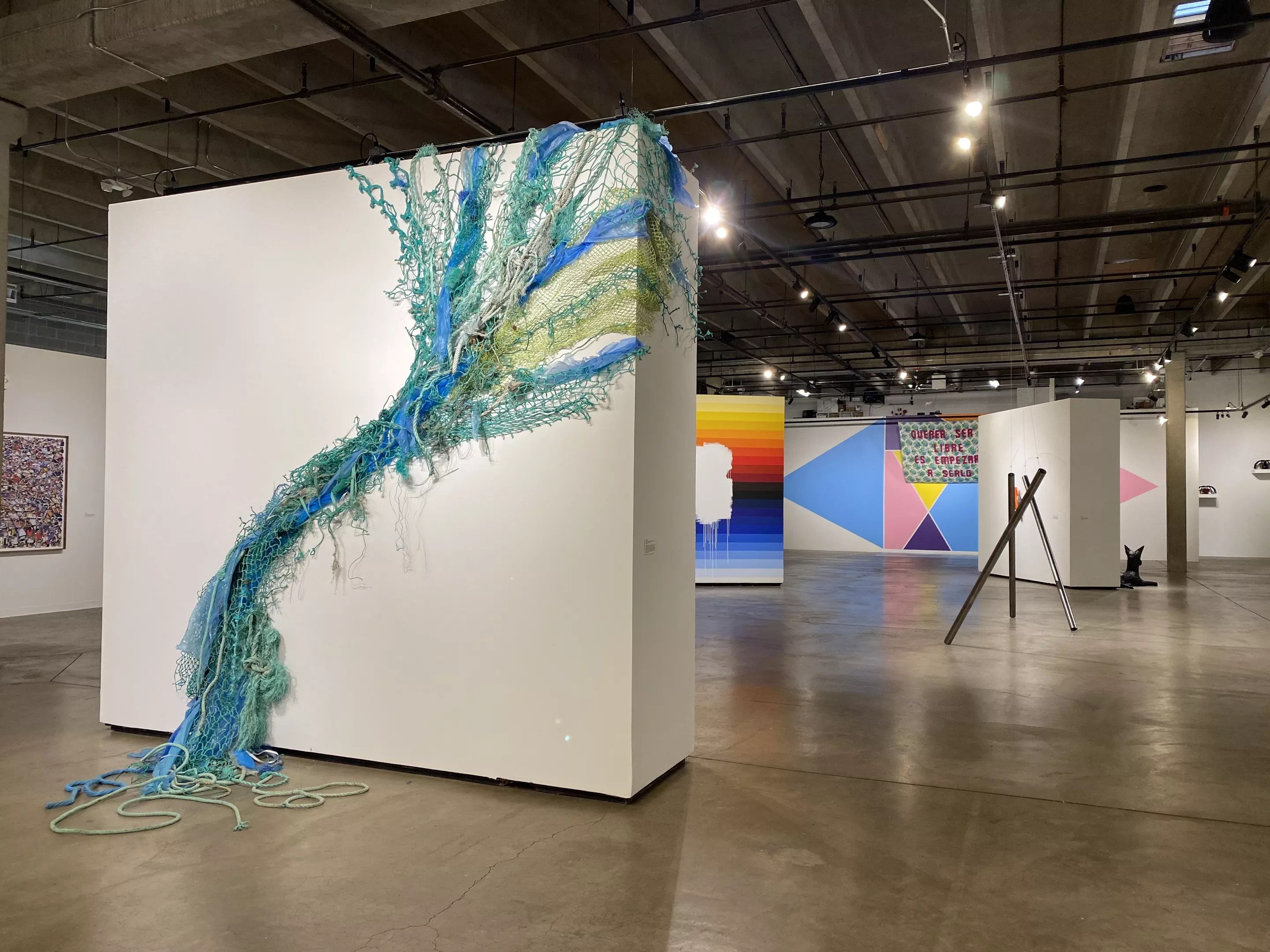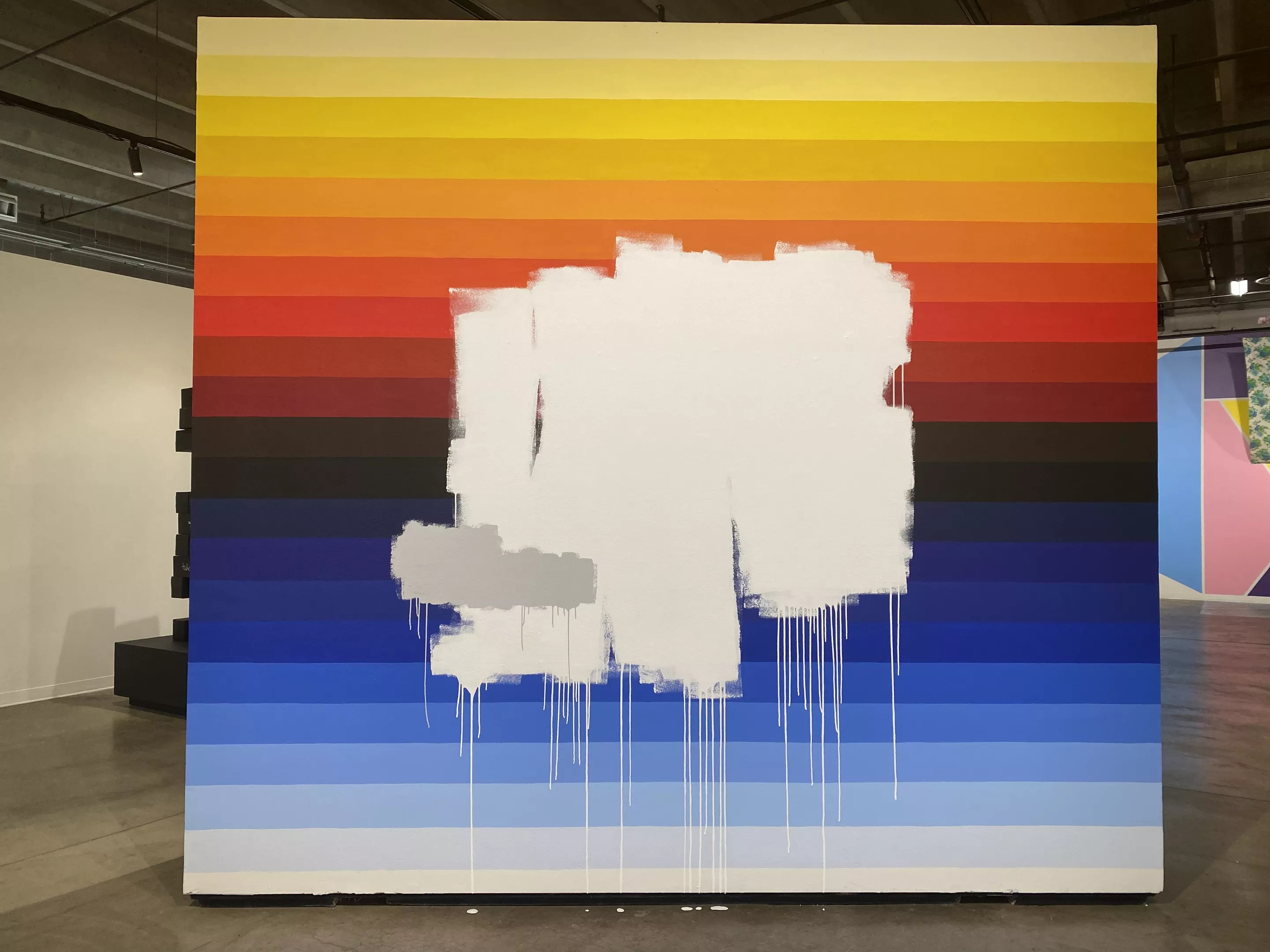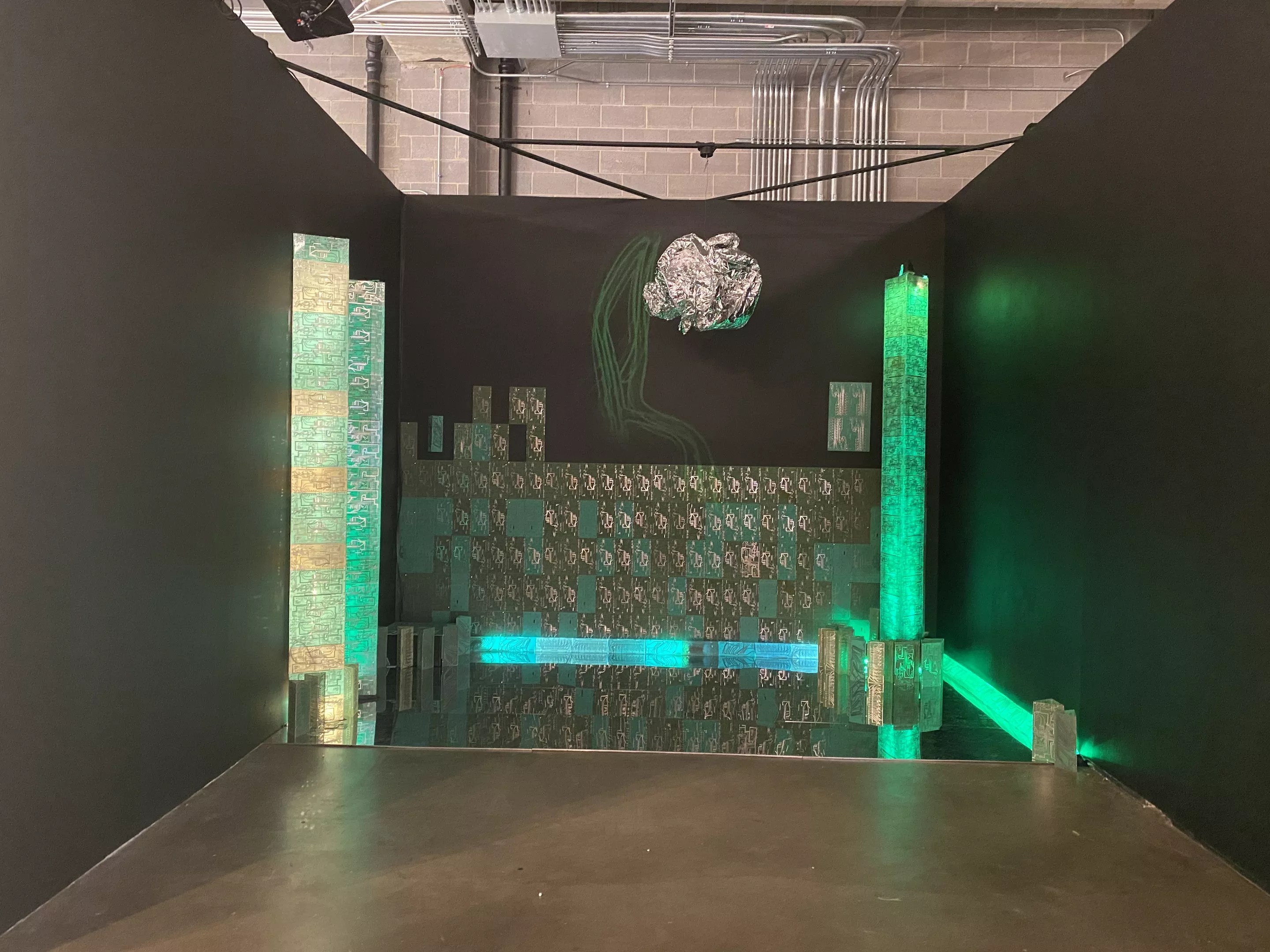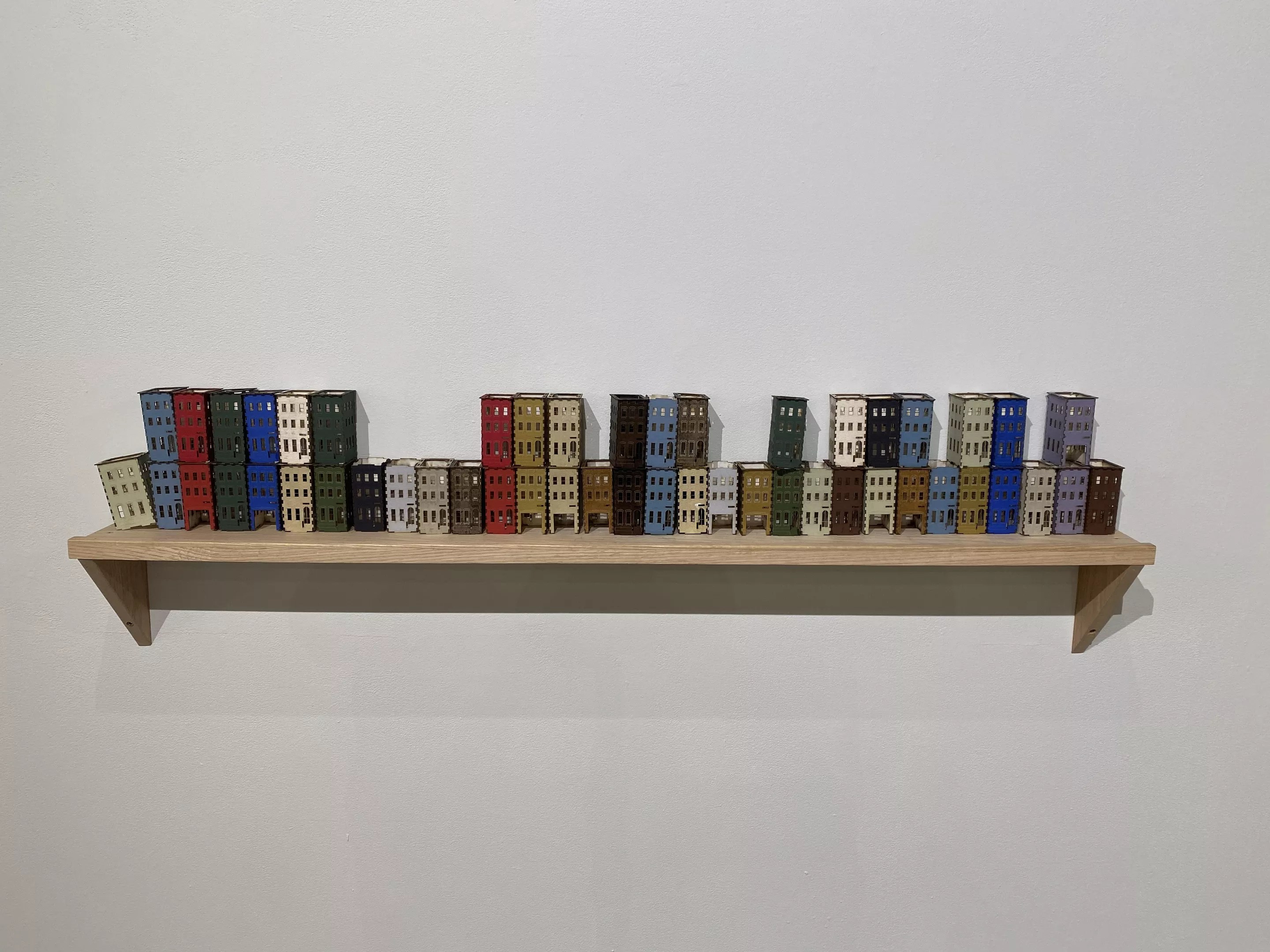
courtesy of RedLine

Audio By Carbonatix
Since it was established over a decade ago by Laura Merage, RedLine has presented an annual members’ show that follows the theme for the venue’s exhibition program. This year, that theme is “Afrofuturism,” which imagines utopian pasts or futures in which black people are central to the narrative content.
I’ve said it before, and I’ll say it again: It doesn’t make sense to tie a members’ show to a specific theme when the participants have little in common – ideally, such an exhibit should be a free-for-all, with each artist presenting what they do best, whatever that may be. Luckily, that’s pretty much how this year’s members’ show, Near in the Distance, turned out. As RedLine director Louise Martorano observes with a laugh, “The artists never follow the theme, and just do what they want.”
The unwieldy task of organizing the show fell to Rhode Island-based curator Nicole J. Caruth. Some months ago, Caruth came to RedLine to speak with the residents about what they intended to create for the exhibition, and she found that some of the artists were uncomfortable with the theme, feeling that their work would be inauthentic. As a result, she did an admirable job of adjusting the Afrofuturism theme to the mostly non-African American artists at RedLine, or at least was flexible enough to allow the artists to adjust the theme themselves. As she says in her curator’s statement, “You won’t find the typical aesthetics associated with Afrofuturism here.”
When I talked with Caruth just hours before Near in the Distance was set to open, she told me that gentrification was on the minds of many of the RedLine artists. And that makes sense, since artists – even those artists with temporarily subsidized spaces at RedLine – are on the front lines of the process: Artists typically have their studios and often their homes in affordable areas, and here in Denver, those formerly cheap neighborhoods are becoming high-rent districts virtually overnight. Caruth takes note of this, too, in her curator’s statement: “The artists in this exhibition focus on the world as they know it now, tackling topics such as displacement, surveillance, climate change, hybridity, gender equality and rest.”

One side of Anthony Garcia Sr.’s mural, “White Wash.”
Courtesy of RedLine
The show starts in the small gallery off the lobby with Eileen Roscina Richardson’s “Cultivate,” which looks like a kitchen and is very homey and welcoming. Hanging from the ceiling is a ring of dried flowers arranged so that they radiate away from the center. Below that is a large table with chairs around it; on top of the table are a row of books and several vessels holding fermenting agents, such as sourdough starter. The idea is to create a sense of community by bringing people together to make food with the fermented ingredients: As the culmination of the piece, the artist plans to stage just such a dinner.
As viewers enter the main gallery, they encounter Regan Rosburg’s “Everything Is Fine,” wrapping around a freestanding wall; the side facing the entry looks something like a big, abstract drip painting. The piece addresses pollution and climate change, and focuses on Rosburg’s residency in the Arctic, to which she sailed from Svalbard, Norway, aboard a tall ship with other artists, along with scientists and writers. On one side of the wall, Rosburg has draped ghost nets and other bits of plastic flotsam, and on the opposite side are scores of pieces of correspondence from artists, children, scientists and others. The plastic-covered side reflects the negatives related to the issue, while the side with the letters reveals hope for the future.
Artist and community activist Anthony Garcia Sr. has also taken over both sides of a freestanding wall for his two-sided mural, “White Wash.” On the prominent side is a set of horizontal stripes evocative of Latino weaving, marred by a swath of whitewash and on the other side broader stripes in a dirty white all but completely cover the marks and images that lie beneath. As Garcia explains in his artist’s statement, the goal is a society that values its communities and their histories. Gentrification and the erasure of existing cultures is clearly on the mind of the artist, one of the city’s premier muralists.

Tony Ortega’s “Northside Gothic.”
Courtesy of Tony Ortega
Opposite Garcia’s piece, Tony Ortega has used one side of a similar wall for a painting of a 1970s Chicano couple rendered in his signature style. Behind them is an outline of a little north Denver house and, behind that, a trio of smaller, similar portraits of the couple. In front of the painting, on both sides, Ortega has placed sculptures of guardian animals – dogs? – done in black papier m’ché. The old Northside was once the heart of the barrio, but it’s now being filled with affluent whites, so the topic is again gentrification: The dreams of the young couple from a generation ago are unattainable for their children.

“Circuit City,” by Chris Bagley.
Courtesy of RedLine
No artist takes the “future” implication of Afrofuturism more to heart than Chris Bagley, whose “Circuit City” is a cross between the interior of a sacred space and that of a nightclub. This piece, which is meant to conjure up some future metropolis, fills an entire small gallery at the back of RedLine. Bagley has covered the floor with shiny reflective panels and, hanging above, a crumbled Mylar blanket rotates like a deformed disco ball. On either side are internally lit columns made of circuit boards, and there are other lighted elements, too. On the back wall is a movement-activated video projection, in which those interacting with it are reduced to flattened blobs with no discernible features. For Bagley, the unrecognizable shadows of figures suggest a time when appearances will be replaced by actions.

Tya Alisa Anthony’s “Balance Baltimore.”
Courtesy of RedLine
Other works deserving of notice include Tya Alisa Anthony’s charming “Balance Baltimore,” a shelf that holds tiny, multi-colored matte-board houses lined up in a row. Marsha Mack’s wallpaper, flower pots, plants and candy-wrapper room has a decidedly upbeat look, and reflects her mixed identity of Asian and Caucasian. I also liked the pieces by Clay Hawkley, especially “The Net,” in which pictures of young people are torn apart, and joined together, by a wavy grid of lines. Trey Duvall’s trio of steel pipes that rise and fall on cables attached to machines is super-simple, but really works. In contrast, the three-part Michael Sperandeo, which includes an archival print, a 3-D print of a mythical figure and augmented reality through a laptop, is incredibly complex, but it works, too.
Finally, established Denver artists Charles Parson and Carley Warren both deserve a tip of the hat. Parson presents an ambitious wall installation about the landscape that incorporates drawings of mountains with clear acrylic contraptions filled with sand. Warren contributes another classic work, a pair of wooden sculptures whose forms are based on the shapes of conventionalized spiders.
Over the past decade, RedLine has shown itself to be a place where you can see some of the area’s best contemporary artists, as well as some of its most exciting emerging ones. That’s more than enough of a theme.
Near in the Distance, through March 8 at RedLine, 2350 Arapahoe Street, 303-296-4448, redlineart.org